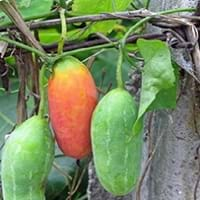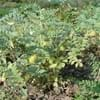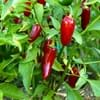Life Span
Annual
Annual and Perennial
Type
Vegetable
Tender Perennial
Origin
India, Philippines, Southeast Asia
South Africa
Types
Not Available
Osteospermum acanthospermum, Osteospermum amplectens, Osteospermum burttianum
Number of Varieties
Not Available
Habitat
Loamy soils, Moist Soils, Subtropical climates
Coastal Regions, Sandy areas, Terrestrial
USDA Hardiness Zone
5-7
10-11
AHS Heat Zone
12-1
Not Available
Sunset Zone
A1, A2, A3, H1, H2, 1a, 1b, 2a, 2b, 3a, 3b, 4, 5, 6, 7, 8, 9, 10, 11, 12, 13, 14, 15, 16, 17, 18, 19, 20, 21, 22, 23, 24
8, 9, 12, 13, 14, 15, 16, 17, 18, 19, 20, 21, 22, 23, 24
Habit
Vining/Climbing
Clump-Forming
Flower Color
Yellow, Orange, Dark Green
White, Purple, Blue Violet
Flower Color Modifier
Bicolor
Bicolor
Fruit Color
Yellow, Dark Green
Not Available
Leaf Color in Spring
Green, Dark Green
Green
Leaf Color in Summer
Green, Dark Green
Green
Leaf Color in Fall
Green, Dark Green
Green, Blue Green
Leaf Color in Winter
Not Available
Light Green
Leaf Shape
Palmate
Irregular
Plant Season
Summer, Fall
Spring, Summer, Fall
Sunlight
Full Sun
Full Sun, Partial Sun
Growth Rate
Very Fast
Fast
Type of Soil
Loam, Sand
Loam
The pH of Soil
Neutral
Neutral
Soil Drainage
Well drained
Well drained
Bloom Time
Indeterminate
Late Spring, Early Summer, Summer, Late Summer, Early Fall, Fall
Tolerances
Drought
Drought
Where to Plant?
Ground
Container
How to Plant?
Seedlings
Seedlings, Stem Cutting
Plant Maintenance
Medium
Medium
Watering Requirements
Requires regular watering, Water daily during growing season
Do Not over Water, Keep ground moist
In Summer
Lots of watering
Lots of watering
In Spring
Moderate
Moderate
In Winter
Average Water
Average Water
Soil Type
Loam, Sand
Loam
Soil Drainage Capacity
Well drained
Well drained
Sun Exposure
Full Sun
Full Sun, Partial Sun
Pruning
Cut out old flower stalks, Prune after flowering, Remove crossing or rubbing branches, Remove dead or diseased plant parts
Remove damaged leaves, Remove dead branches, Remove dead leaves
Fertilizers
Apply 10-10-10 amount, Apply 12-12-12 amounts, Phosphate
All-Purpose Liquid Fertilizer
Pests and Diseases
Aphids, Army-worms, Bacteria wilt, Bacterial leaf spot, Blight, Cucumber beetles, Cutworms, Fusarium leaf spot, Red spider mite
Red blotch
Plant Tolerance
Drought, Full Sun, Salt and Soil Compaction
Drought
Flower Petal Number
Single
Single
Foliage Texture
Coarse
Medium
Foliage Sheen
Matte
Not Available
Attracts
Bees, Flies, Flying insects
Bees, Birds, Butterflies
Allergy
Hypoglycaemic Coma, Irregular Heart Rhythm, Miscarriage
Not Available
Aesthetic Uses
Not Used For Aesthetic Purpose
Beautification, Showy Purposes
Beauty Benefits
Anti-ageing, For treating wrinkles, Nourishes scalp, Remove blemishes
Not Available
Environmental Uses
Food for animals
Air purification
Medicinal Uses
Anti-fungal, Diabetes, Fever, Gastrointestinal disorders, Jaundice, Leprosy, Scabies, Weight loss
Not Applicable
Part of Plant Used
Fruits
Flowers
Other Uses
Cosmetics, Repellent, Use in Chinese herbology
Used as Ornamental plant
Used As Indoor Plant
No
No
Used As Outdoor Plant
Yes
Yes
Garden Design
Dried Flower/Everlasting, Vine
Bedding Plant, Container, Cutflower, Foundation, Groundcover, Hanging Basket, Mixed Border, Rock Garden / Wall
Botanical Name
Coccinia grandis
OSTEOSPERMUM fruticosum
Common Name
baby watermelon, little gourd, tindora, tendli
Shrubby Daisybush, Trailing African Daisy
In Hindi
तेंडली, कुंदुरी
Blue Eyed Daisy Plant
In German
Tindola,
Efeu Kürbis
Blue Eyed Daisy Pflanze
In French
Ivy gourd
Blue Eyed Daisy Plante
In Spanish
Ivy gourd
Planta observada azul de la margarita
In Greek
Ivy gourd
Μπλε Eyed Daisy Φυτών
In Portuguese
Ivy gourd
Planta da margarida de olhos azuis
In Polish
Ivy gourd
Blue Eyed Daisy roślin
In Latin
Ivy gourd
Daisy Blue Eyed Planta
Phylum
Magnoliophyta
Magnoliophyta
Class
Magnoliopsida
Magnoliopsida
Order
Cucurbitales
Asterales
Family
Cucurbitaceae
Asteraceae
Genus
Coccinia
Osteospermum
Clade
Angiosperms, Eudicots, Rosids
Angiosperms, Asterids, Eudicots
Tribe
Not Available
Calenduleae
Subfamily
Papilionoideae
Asteroideae
Season and Care of Ivy Gourd and Blue Eyed Daisy Plant
Season and care of Ivy Gourd and Blue Eyed Daisy Plant is important to know. While considering everything about Ivy Gourd and Blue Eyed Daisy Plant Care, growing season is an essential factor. Ivy Gourd season is Summer and Fall and Blue Eyed Daisy Plant season is Summer and Fall. The type of soil for Ivy Gourd is Loam, Sand and for Blue Eyed Daisy Plant is Loam while the PH of soil for Ivy Gourd is Neutral and for Blue Eyed Daisy Plant is Neutral.
Ivy Gourd and Blue Eyed Daisy Plant Physical Information
Ivy Gourd and Blue Eyed Daisy Plant physical information is very important for comparison. Ivy Gourd height is 60.00 cm and width 90.00 cm whereas Blue Eyed Daisy Plant height is 36.00 cm and width 51.00 cm. The color specification of Ivy Gourd and Blue Eyed Daisy Plant are as follows:
Ivy Gourd flower color: Yellow, Orange and Dark Green
Ivy Gourd leaf color: Green, Dark Green
Blue Eyed Daisy Plant flower color: White, Purple and Blue Violet
- Blue Eyed Daisy Plant leaf color: Green
Care of Ivy Gourd and Blue Eyed Daisy Plant
Care of Ivy Gourd and Blue Eyed Daisy Plant include pruning, fertilizers, watering etc. Ivy Gourd pruning is done Cut out old flower stalks, Prune after flowering, Remove crossing or rubbing branches and Remove dead or diseased plant parts and Blue Eyed Daisy Plant pruning is done Remove damaged leaves, Remove dead branches and Remove dead leaves. In summer Ivy Gourd needs Lots of watering and in winter, it needs Average Water. Whereas, in summer Blue Eyed Daisy Plant needs Lots of watering and in winter, it needs Average Water.





